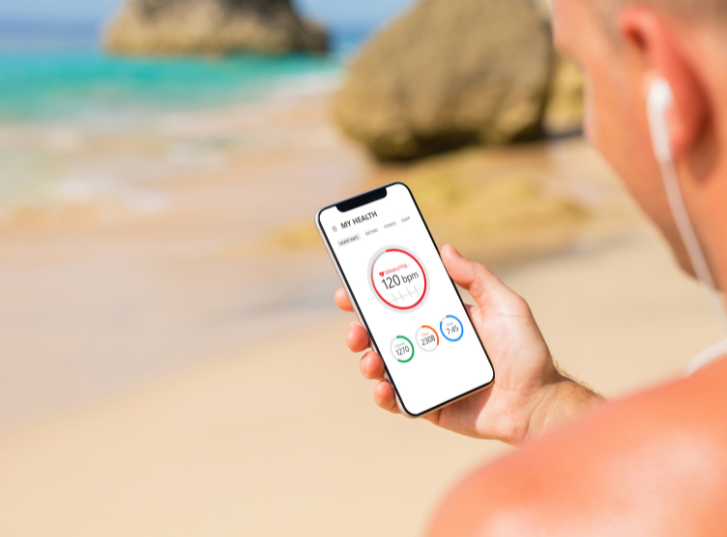
Imaging Implemented into Wearables Promotes Long-term Monitoring
Imaging technology is an efficient tool to aid patients in receiving accurate and fast diagnoses. However, symptoms may change or worsen over time. This is where long-term devices come in, especially wearables which provide real-time monitoring. Some of the biggest challenges revolve around how to make a safe, comfortable, and durable product that provides reliable information. Imaging devices are becoming less bulky, faster, and more efficient [1]. Therefore, it’s no wonder that there is currently work being done to integrate imaging technology into wearables. These devices promote immediate patient intervention, while also collecting additional physiological factors [1]. The future of imaging also includes technology being integrated into our phones, where pregnant women can perform their examination through an app if needed [1]. Although this technology isn’t meant to replace doctors, it helps aid doctors with more meaningful information that they can use to make decisions.

Wearable Brain Imaging
When measuring brain activity, it’s important to measure a patient’s activity during different activities and situations. This can often be challenging because brain imaging often requires expensive technology and long hours [2]. Therefore, wearable technologies like a brain-imaging cap are revolutionizing the way that brain imaging is done [2]. This allows patients to be recorded as they continue their normal routines, and promotes natural and accurate data [2]. Furthermore, this can be used on all ages, whether to image children or to image elderly patients [2]. Although the cap has a long way to go before becoming commercialized, it’s a step in the right direction. Overall, patients need to be monitored while they’re actively participating in daily routines and engaged with other people. Data taken in a lab may provide inaccurate data and be unable to capture daily brain activity.

Wearable Device Integrates Ultrasound Sensor
Another type of wearable technology is an imaging device that provides ultrasounds even during a workout [3]. The wearable device is useful for taking ultrasounds of the heart and can be worn for up to a day [3]. This device is a breakaway in wearable imaging technology because it is portable and user-friendly [3]. Furthermore, this device integrates AI technology so that the amount of blood pumped by the heart is measured and used to aid in treatment and diagnosis [3]. Additionally, this wearable can be used while the patient is active, and can give details on how the heart behaves when under stress or physical activity [3]. Overall, this wearable imaging device is useful for patients who need long-term and non-invasive monitoring. Moreover, this technology allows doctors to access updated and complete assessments of a patient’s cardiac health, which promotes better diagnoses.
Future of Wearable Imaging Devices
Medical devices often aim to become more portable, longer-lasting, and user-friendly. They’re usually used to treat chronic and long-term conditions and therefore must be able to withstand multiple situations and conditions in patients. Therefore, wearable technology plays an important role in providing patients with long-term monitoring, although they must still overcome the same barriers that medical devices face. The future of wearable technology will see miniature imaging devices that capture scans within seconds [4]. These devices will also be able to connect to mobile apps and capture a range of data that providers can use to make effective treatment plans [4]. Furthermore, wearable imaging technology needs to be accessible to patients, and therefore cannot be too expensive or require extensive training to be used [4]. Additionally, wearable imaging needs to implement technologies like AI, cloud computing, telehealth, and more so patients have better outcomes.

HITS
HITS’ agency culture and mission facilitate customer/human-centered design. We tailor software and project management support products to meet our customer’s needs. Furthermore, HITS puts the “soft” in “software” development. We analyze functional requirements to ensure all needs are properly adjudicated to be included in the software. This allows clients and customers to have peace of mind that their needs are heard and acted upon. HITS also makes sure that all medical and appropriate representatives (either medical, technical, supportive, and/or administrative) are present during the High-Performance Team creation as a wide range of expertise is needed to develop the Capability Development Documents. Finally, HITS expects all staff to incorporate customer experience-related best practices and offers incentives for excellent customer experience performance and team collaboration.
References
- https://www.aa.com.tr/en/health/wearable-tech-and-portable-imaging-devices-to-revolutionize-medical-sector/2688677
- https://medicine.wustl.edu/news/wearable-light-based-brain-imaging-tech-to-be-commercialized-with-aid-of-nih-grant/
- https://today.ucsd.edu/story/cardiac-imaging-on-the-go
- https://www.theguardian.com/science/2022/jul/28/stick-on-ultrasound-patch-revolution-medical-imaging